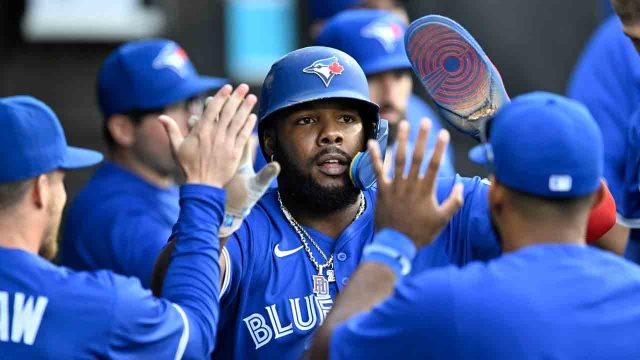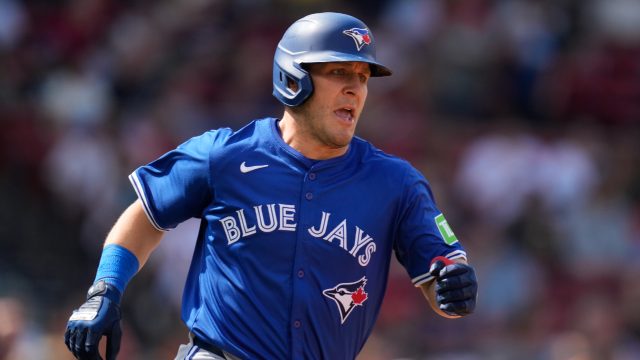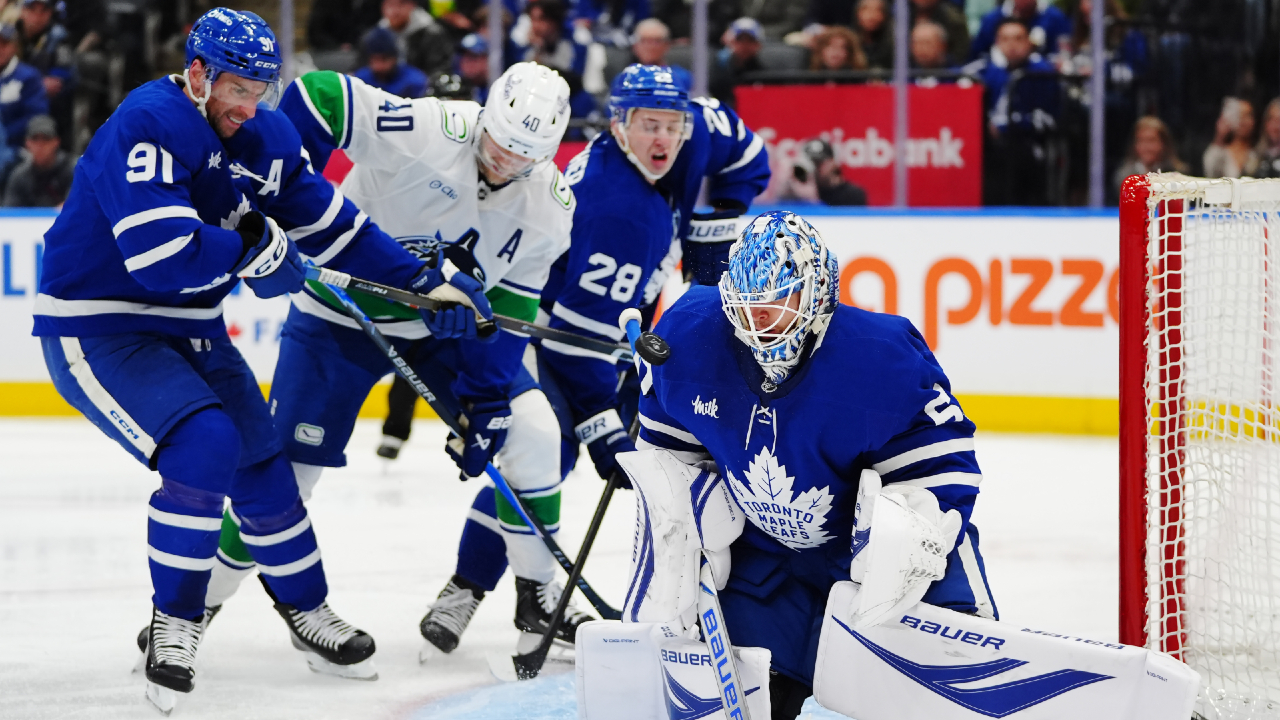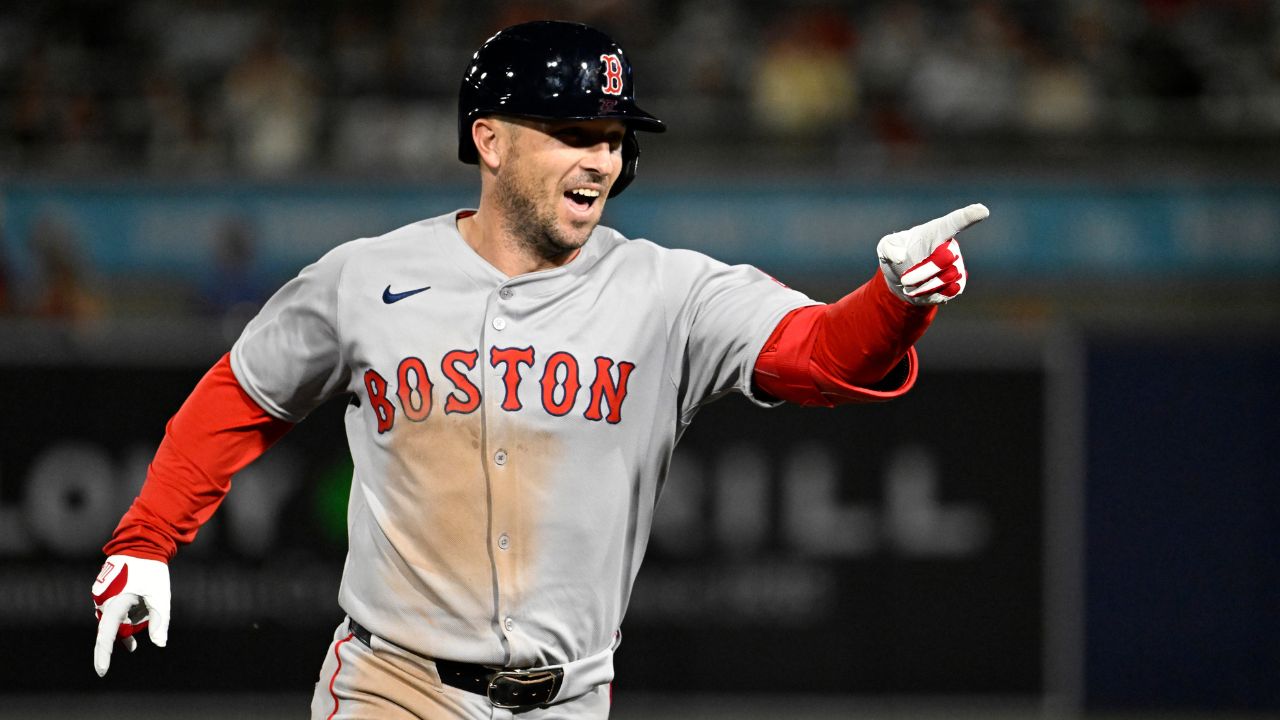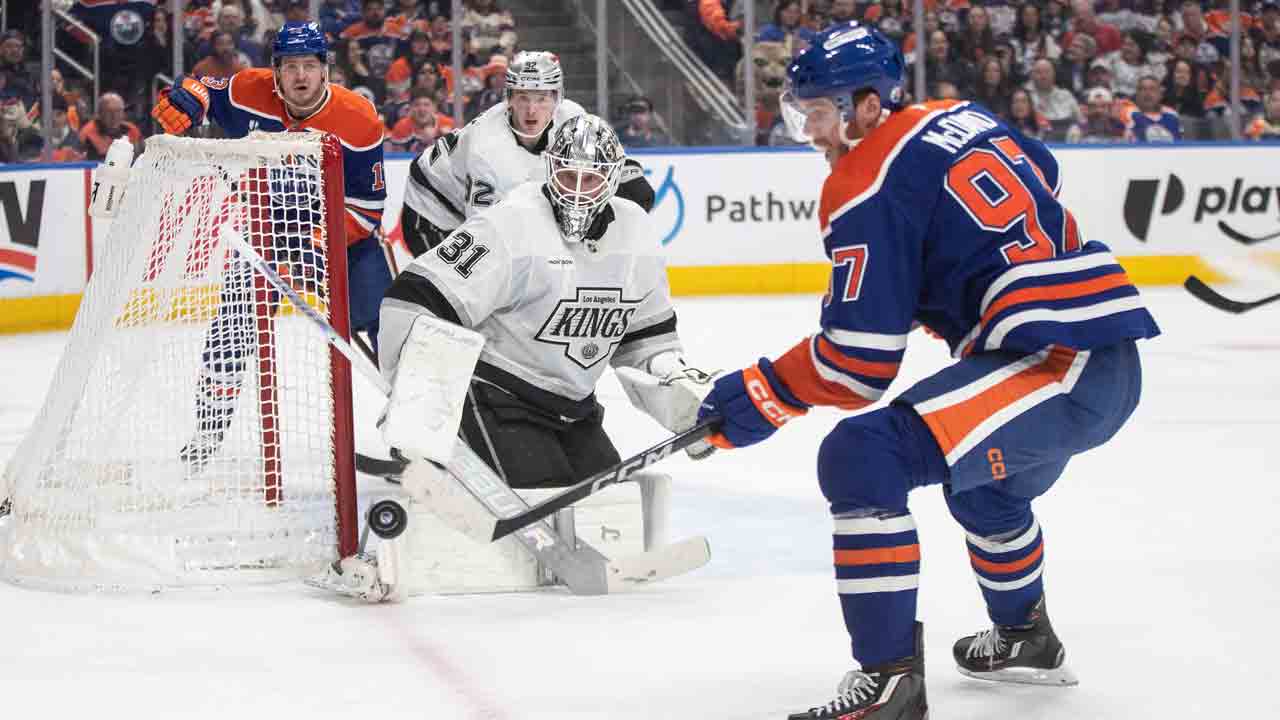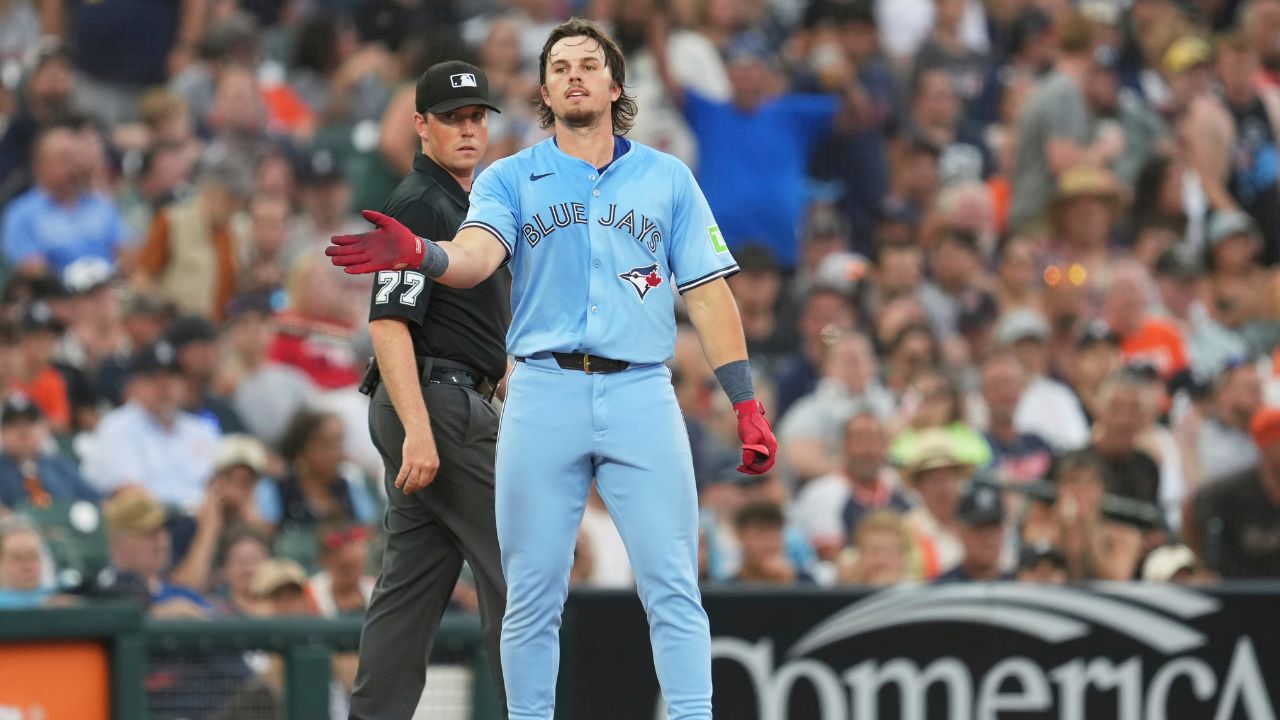
DETROIT — In 2024, when he was up and down between triple-A and the majors, or even earlier this year, when he was the last cut of spring training and wasn’t called up until three weeks into the season, Addison Barger wouldn’t have handled games like Thursday’s well.
First time up, got his barrel to the screws of a Reese Olson changeup, lined it 111 m.p.h. directly into Gleyber Torres’s webbing. Next plate appearance, saw only his third fastball of the night, hammered it at 106 m.p.h. to right field where it nearly knocked Wenceel Perez over as he watched it into his glove. Third trip, didn’t even get a chance when the Tigers intentionally walked him.
As a younger player, that kind of game would’ve made Barger anxious. If I don’t start getting some of these balls to fall, am I going to keep seeing playing time? Am I going to get to stay here at all?
The difference now is having those thoughts — which weren’t irrational at the time — would be preposterous. Barger isn’t going anywhere. He isn’t even being pinch-hit for against left-handers, like in Thursday’s seventh inning when Blue Jays manager John Schneider left him in to face Dietrich Enns, an over-the-top southpaw who spent the last three seasons in Asia. Not exactly an easy dude to gameplan for.
But Barger had one, sitting cutter out of the shoot and staying on it even as Enns got ahead, 0-2, with a pair of fastballs. That’s when Barger spat on a tough, strike-to-ball curveball before finally getting his pitch and putting his swing on it, reaching out and hammering a cutter away into the right-centre field gap for a two-run triple.
It’s approaches like those, within at-bats like those, on nights like those, that are allowing Barger to thrive within a reciprocal cycle of growth, success, and confidence that’s sustaining his breakout campaign.
And it’s nights like Friday — when Barger shot a full-count double to the left-centre field wall in the fourth to tie a game and spark a rally the Blue Jays rode to a 6-2 victory over the Detroit Tigers, —that offer a ringing reinforcement of what a catalyst Barger can be for MLB’s most productive offence since May 8.
Over that span, the Blue Jays have gone 46-22 — a best-in-baseball .672 winning percentage — while leading MLB in batting average, on-base percentage, OPS, and sheer runs per game. It’s a stunning wave the Blue Jays have ridden to MLB’s winningest record at 62-42, a half-game ahead of the 61-42 Brewers. It’s the latest point in a season at which the Blue Jays have held MLB’s best record since Aug. 2, 1992.
Barger’s game-flipping swing came with one out, Vladimir Guerrero Jr. on third, and Detroit up one. Tigers starter Keider Montero was doing what everyone does against Barger these days, throwing anything but his fastball and nibbling around the edges of the zone.
Barger took a good, long look at a 2-2 curveball that started belt-high and plunged beneath his knees, demonstrating the kind of measured take you wouldn’t have seen from him years ago. And then the payoff pitch, a slider, made quite a crack off his bat:
Barger crossed with the go-ahead run later in the inning as Javier Baez let Joey Loperfido reach on a throwing error. And from there, five of the next six Blue Jays came up with hits against Montero, punctuated by a loud Bo Bichette double in the fifth that plated two and chased the Tigers starter from the game.
Ultimately, the top eight hitters in Toronto’s lineup all finished the night with hits, four of them with two or more; George Springer ripped a trio of balls at 107 m.p.h. or harder; Guerrero doubled twice off smooth swings; and of the 13 balls put in play at 100 m.p.h. or harder throughout the game, 10 came off Blue Jays bats.
Jose Berrios was entirely fine, working six innings of two-run ball, striking out six while walking two, yet relegated to an afterthought shadowed by Toronto’s towering offence. The Blue Jays now have double-digit hits in four straight games, and six of eight since the all-star break. Since that May 8 cut-off, 13 players have taken at least 60 plate appearances for the Blue Jays — 11 of them boast a wRC+ of the league-average 100 or higher.
Of course, every good team needs an unheralded contributor who unexpectedly elevates himself. You remember the exhilarating 2015 Blue Jays for Josh Donaldson, Edwin Encarnacion, and Jose Bautista combining to hit an absurd 120 home runs with 348 RBIs. But the fourth-most productive hitter on that team, Chris Colabello, played an integral role in its success with a 143 wRC+ and 1.77 WPA that trailed only the aforementioned three-headed monster.
A year later, as Encarnacion and Donaldson once again led the way (Bautista’s season was marred by injury), it was Michael Saunders helping raise Toronto’s offensive ceiling with an all-star campaign, homering 24 times and OPS’ing .816 as the Blue Jays returned to the ALCS.
This year it’s Barger, who entered Friday’s play third on the team in wOBA (.356), OPS (.842), and wRC+ (129). For anyone uninitiated with modern catch-all offensive statistics, those numbers are really good. They tell us Barger’s been his team’s third-best hitter — following Springer and Guerrero — in a way traditional counting stats can’t because Barger spent the first three weeks of the season in the minors.
The way the league’s adjusted to his approach tells us how well Barger’s been hitting, too. From his mid-April call-up through the end of May, Barger was getting challenged with a first-pitch fastball over half the time. But now that he’s demonstrated what he can do to those pitches, slugging .503 with a 51-per-cent hard-hit rate against heaters, that first-pitch fastball rate has declined precipitously, all the way down to only 43 per cent this month.
Fastballs in general have been tough to come by, as Barger’s seeing one less than half the time over his last 40 games. There’s no such thing as a fastball count anymore for him. Through the end of May, when Barger was ahead in the count, he saw fastballs 58 per cent of the time. But since the calendar flipped to June, that rate’s dropped 10 points.
Yet, all Barger can do is follow the patterns and adjust back. Like Thursday, when Olson started him changeup-curveball in his first plate appearance and threw him another changeup in a 2-1 count. Barger likes hitting changeups and was looking for one in that spot — that’s why it came off his bat at 111 m.p.h.
Similar approach his next time out, when Olson stayed away from his fastball again, starting Barger with a sweeper and throwing a 1-1 curveball, a pitch he’d used less than five per cent of the time in that count this season. But Barger didn’t bite, and when Olson finally gave in and threw a sinker, he laced it at 106 m.p.h.
That those two balls seemingly caught a gravitational pull into gloves doesn’t matter. Barger did his job. And now that he’s less worried about losing that job, he can live with the outcomes.
“That’s baseball. My job is to hit the ball hard. If I do it, I’ve accomplished my goal,” he says. “There aren’t that many times in the game where I’m on the fastball. So, it’s fine if they don’t want to throw them to me. I’ll take a chance every now and then. But rarely am I even on the heater. So, it’s fine. I understand that it’s not a pitch I’m going to get a lot of.”
This April, when Barger was called up and hit .171 through his first 16 games while making outs on 10 balls he hit 95 m.p.h. or harder and running a .335 xBA, he wasn’t quite so zen about it.
“I think it frustrated him,” Schneider said. “But it doesn’t now. It’s so cool to see him come into the dugout — and this goes for a lot of guys — not really talking results. They’re talking about what they were thinking in the box in real time and trying to make adjustments. It’s way different now than it was earlier in the year.”
That goes for the matchups and situations Schneider trusts Barger in, as well. He left him in to face another lefty on Friday, reliever Brant Hurter, and Barger nearly came through again, lacing a ball up the middle at 96 m.p.h. But Baez was positioned practically behind second base and needed only one-and-a-half steps to his left to corral it.
There was a time, not so long ago, when that result would’ve driven Barger nuts. But not anymore. And he has his own growth, success, and confidence to thank for that.
“I have no worries about not playing or getting sent down. That’s completely gone. I can just try to hit the ball hard and help the team win,” Barger said. “And I know that if I keep hitting the ball hard, they’re going to drop in eventually. But mindset-wise, when you’re having a better year, it definitely helps. There’s some truth to that.”


